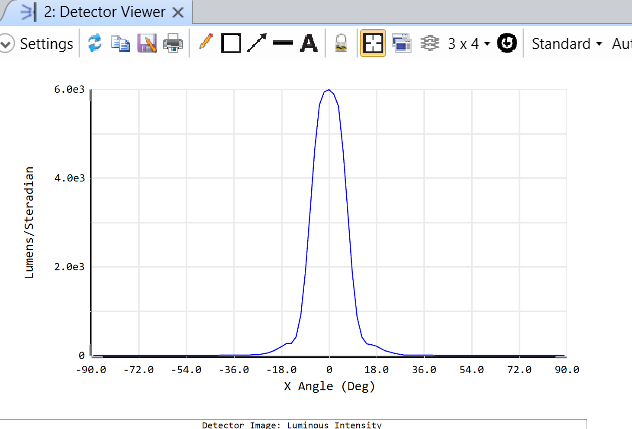I am working on a design that involves an array of sources. To speed-up simulations, emitter/source details are reduced to saved ray-set files.
FILE-A: (Emitter Ray-Set)
I generate a source file (ray-set) by combining an LED source with a custom TIR lens and a detector. The detector is placed following the output face of the TIR lens. The captured rays are then saved to a (*.SDF) file.
FILE-B:.. (System)
I create a larger system model, that involves an array of “n” emitters. I setup “n” sources, using the saved (*.SDF) file above. I place a detector between the sources and downstream optics. Those rays then propagate forward.
The issue I am having is that when I check the angle of the rays from [File-A] incident upon the detector following the TIR lens , it is significantly different than the angle of the rays I get from using the “generated sources” [File-B]
I measure around 18 degrees (half-angle) in [File-A] with the TIR lens, that I am using to generate the source file (ray-sets). But I only measure about 13 degrees when using that generated source file (ray-sets) in [File-B] Any ideas why that might be the case?
The TIR lens, of [File-A] that generates the source file (ray-sets) is a boolean object.
Could that be messing something up? Any help would be appreciated. Thank you.







